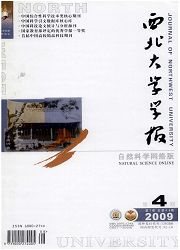

 中文摘要:
中文摘要:
目的为有效抑制多用户干扰(MUI)和多径衰落,改善误码特性。方法由于信道特性的时变特性,为保证可靠通信,须合理设计用户的标识点。结果合理设计用户的标识点可以避免标识点等于或接近时变信道的零点根,引起大的衰落,使系统性能变差。结论提高了系统的可靠性和误码性能。
 英文摘要:
英文摘要:
Aim To suppress the muhiuse interference (MUI) and mitigate the muhipath effect, the principle of G-OFDM through the muhipath channels is discussed. Methods Due to the time variation of channels, the user signature points must be best chosen. Results The user signature points were designed properly to avoid the user signature points equal or close to the roots of the channels making the system performance degeneratly. Conclusion Through a few methods of choosing the user signature point, the performance of G-OFDM compared with traditional OFDM scheme and the abilities of the suppression of the muhiuse interference (MUI) and the mitigation of the muhipath effect are progressed.
 同期刊论文项目
同期刊论文项目
 同项目期刊论文
同项目期刊论文
 期刊信息
期刊信息
